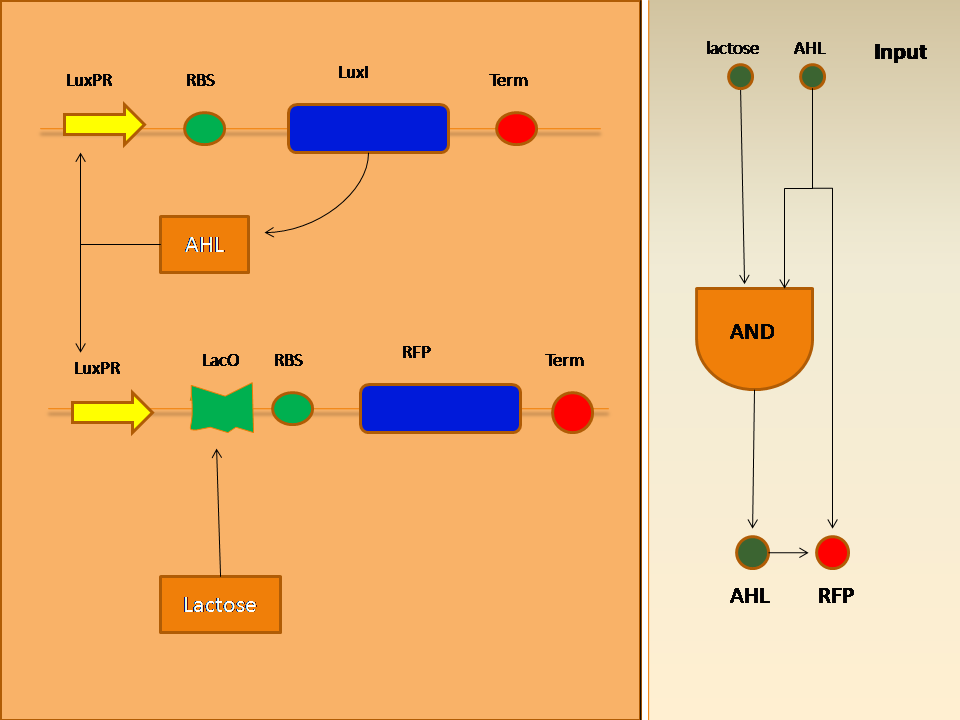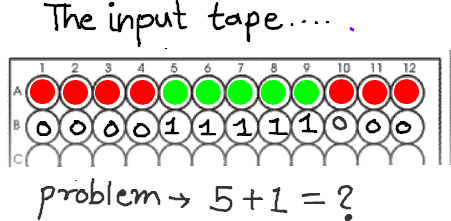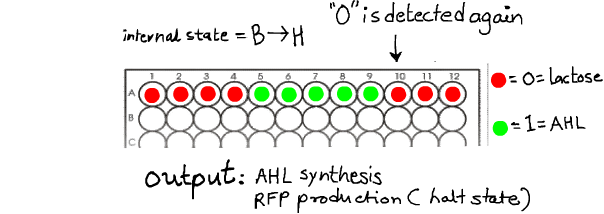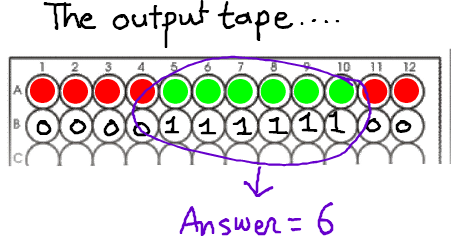Team:IBB Pune/construct
From 2009.igem.org
(Difference between revisions)
Samitwatve (Talk | contribs) |
|||
| Line 6: | Line 6: | ||
<p><span style="font-weight:bold; font-size:200%; color:#6600FF;">The Simplified Construct</span></p><br> | <p><span style="font-weight:bold; font-size:200%; color:#6600FF;">The Simplified Construct</span></p><br> | ||
| - | [[Image:Simplified.png|center|800px]] | + | [[Image:Simplified.png|center|800px]]<br> |
| - | = | + | <p><span style="font-weight:bold; font-size:150%; color:#FF6600;">Working</span></p> |
| - | + | ||
[[Image:tapstrt.png|center|450px]] | [[Image:tapstrt.png|center|450px]] | ||
| Line 34: | Line 33: | ||
When the Turing Machine encounters Lactose ('0') the repressor protein is released from the LacO site. This enables the pLuxR promoter to be activated by the AHL-LuxR complex. This enables the expression of AHL (turning the state '0' into '1') and also enables the expression of the reporter gene (RFP). This signals that the Turing machine has halted. | When the Turing Machine encounters Lactose ('0') the repressor protein is released from the LacO site. This enables the pLuxR promoter to be activated by the AHL-LuxR complex. This enables the expression of AHL (turning the state '0' into '1') and also enables the expression of the reporter gene (RFP). This signals that the Turing machine has halted. | ||
| - | The overall result of this process is that the Turing Machine adds +1 to a string of 11111's as is required by the specification of the Turing Machine. | + | The overall result of this process is that the Turing Machine adds +1 to a string of 11111's as is required by the specification of the Turing Machine.<br> |
| - | + | <p><span style="font-weight:bold; font-size:150%; color:#FF6600;">How does Simplification Help?</span></p> | |
| - | + | ||
| - | + | ||
By reducing the number of proteins required to 2 LuxI and LuxR, we drastically reduce the complexity of the system design. Our simplified constructs enable us to phenotypically mimic the behaviour of a Turing Machine Unary Adder. | By reducing the number of proteins required to 2 LuxI and LuxR, we drastically reduce the complexity of the system design. Our simplified constructs enable us to phenotypically mimic the behaviour of a Turing Machine Unary Adder. | ||
Revision as of 01:58, 22 October 2009

 "
"






